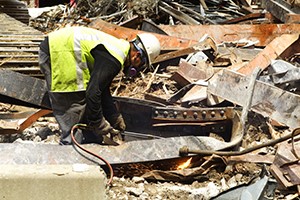11 Tips for Working Safely in Demo Projects

Demolition is a growing industry in the US, in which site clearance, structural dismantlement, environmental radiation, salvage, recycling, and industrial recovery employs many people on construction sites. Workers in this field use hydraulic equipment, cranes, loaders, wrecking balls, and more to do their jobs.
Demolition work involves many of the same hazards that arise during other construction activities. However, demolition also involves additional hazards due to factors like lead-based paint exposure, sharp or protruding objects, and asbestos-containing material.
The Occupational Safety and Health Administration (OSHA) has provided guidelines to help workers remain safe during demolition operations.
- Brace or shore up the walls and floors of structures which have been damaged and which employees must enter
- Select, wear, and use appropriate PPE for the task, and inspect it before use
- Inspect all stairs, passageways, and ladders, and illuminate all stairways
- Shut off or cap all electric, gas, water, steam, sewer, and other service lines, and notify appropriate utility companies
- Guard wall openings to a height of 42”, and cover and secure floor openings with material able to withstand the loads likely to be imposed
- Floor openings used for material disposal must not be more than 25% of the total floor area
- Use enclosed chutes with gates on the discharge end to drop demolition material to the ground or into debris containers
- Demolition of exterior walls and floors must begin at the top of the structure and proceed downward
- Structural or load-supporting members on any floor must not be cut or removed until all stories above that floor have been removed
- All roof cornices or other ornamental stonework must be removed prior to pulling walls down
- Employees must not be permitted to work where structural collapse hazards exist until they are corrected by shoring, bracing, or other effective means



